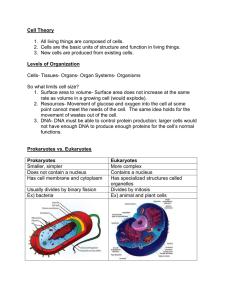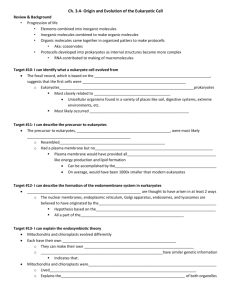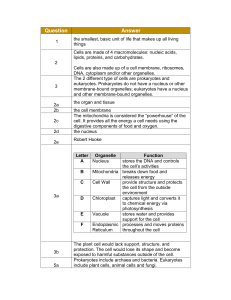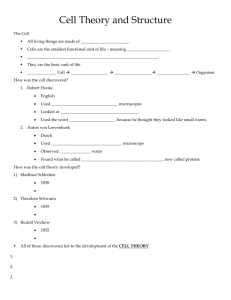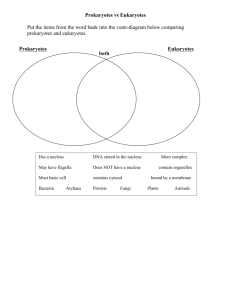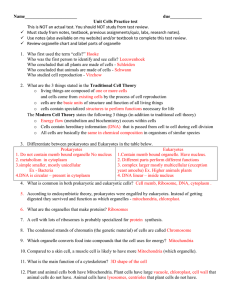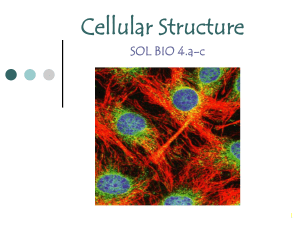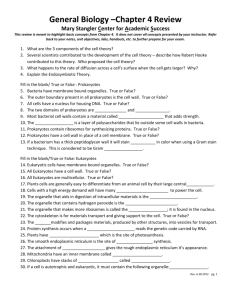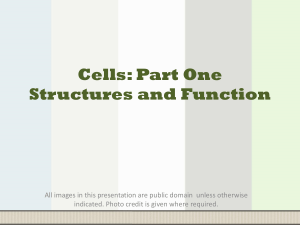The cell
advertisement
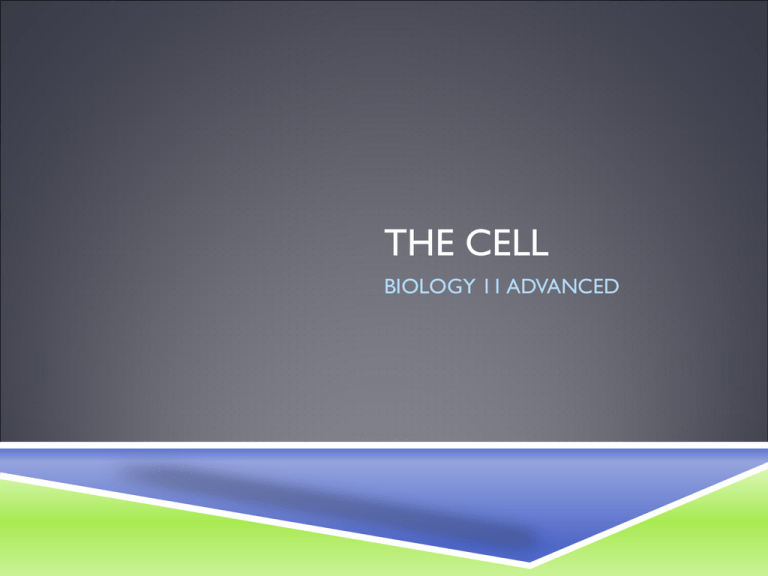
THE CELL BIOLOGY 11 ADVANCED THE CELL THEORY • All living things are composed of one or more cells. • Cells are the basic unit of structure and function of all living things. • Cells only arise from pre-existing cells. Cells are divided into two groups based on their organelle characteristics. These two groups are called Eukaryotes and Prokaryotes. PROKARYOTES • Do not have a true nucleus or membrane bound organelles. • They are the most simple types of living cells. • Examples of prokaryotes would be different types of bacteria, such as E. Coli and cyanobacteria. • Commonly found in air, water, and soil. http://mwsubio101.ning.com/profiles/blogs/2263214:BlogPo st:2603 EUKARYOTES • Eukaryotes have a true nucleus and membrane bound organelles. • Examples of eukaryotes would be plants, animals, fungi and protists (usually single celled organisms, such as an amoeba.) • Can be multicellular or unicellular. http://facstaff.cbu.edu/~seisen/ EukaryoticCellStructure.htm EUKARYOTIC VS. PROKARYOTIC THE NUCLEUS http://knowledgeclass.blogspot. ca/2012/10/the-nucleus.html THE MITOCHONDRIA http://micro.magnet.fsu.edu/cells/mitoch ondria/mitochondria.html THE CHLOROPLAST http://micro.magnet.fsu.edu/cells/chloropl asts/chloroplasts.html THE ENDOPLASMIC RETICULUM http://cronodon.com/files /Cell_ER_labeled.jpg THE GOLGI APPARATUS http://biologytb.net23.net/t ext/chapter6/concept6.4.ht ml ASSIGNMENT Watch the following video and complete the questions. This is due at the end of class. *Note: Stop video at 5:25 and allow students to self evaluate, matching the organelle to the correct number. Advise students that when the narrator discusses the lysosome, he uses the word suicide, just so they are aware. http://www.youtube.com/watch?v=1Z9pqST72is •Name one way materials move into cells and why this is. •List three types of microscopes used for seeing cells. •What are chromosomes and where are they found? •Where are ribosomes manufactured? •What analogy was made using the cytoskeleton. •What is apoptosis? •What is the centriole important for? •Why do scientists refer to cells as the basic unit of life? •Create a Venn Diagram for eukaryotic vs. prokaryotic cells and animal vs plant cells. •Extra resource: http://www.youtube.com/watch?v=Hmwvj9X4GNY ASSIGNMENT Read the article you were given and address the following questions on a separate sheet of paper. Due at the end of class. What is the difference between aerobic and anaerobic cells? Do anaerobic organisms still exist? If no, why not? If yes, give two examples. In what ways are mitochondria and chloroplasts similar to some prokaryotic cells? What do cells gain from having mitochondria? What about chloroplasts? Why do you think Dr. Margulis met so much resistance with her introduction of endosymbiosis?

